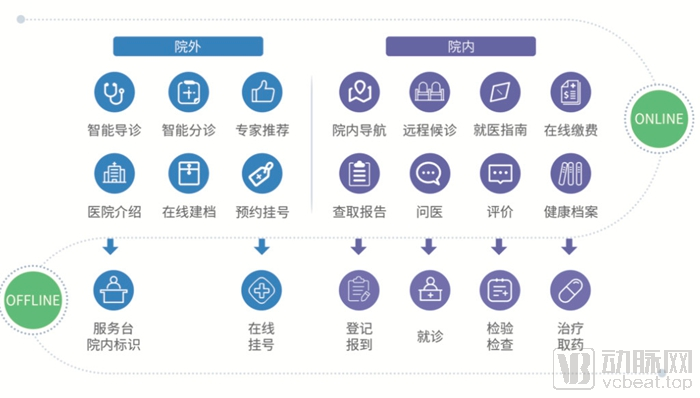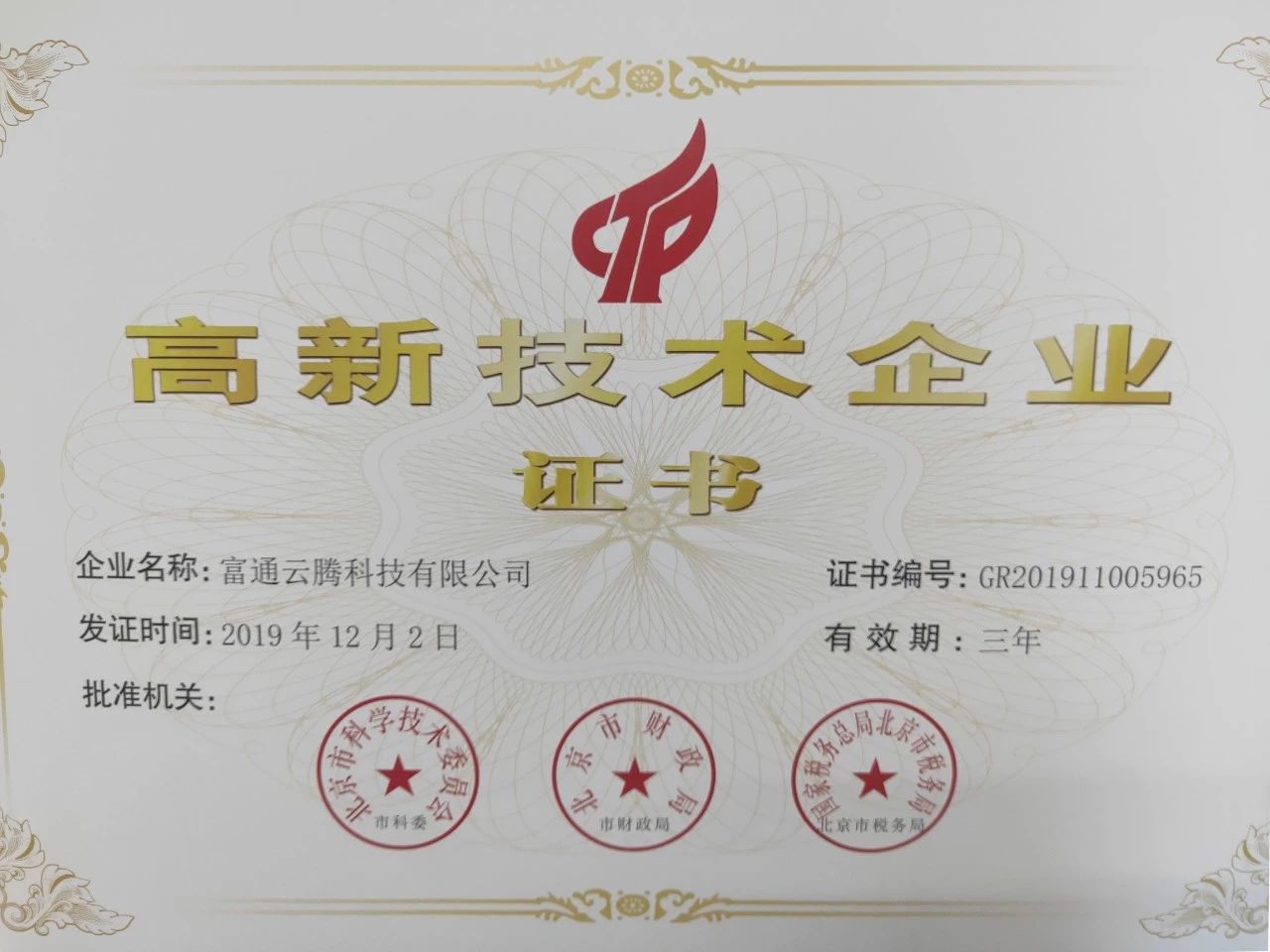The following article is from Artery Network, written by Cai Aoxue.
The number of people at the outpatient service center of a certain top-tier hospital in Beijing has decreased significantly compared to the past. The scenes of men and women, young and old, gathering in front of the guidance desk and long queues at the number return windows, which were once common, are now rarely seen.
The staff told Artery Network (WeChat ID: vcbeat), "Now, most patients complete registration and triage directly through the WeChat public account. The system automatically recommends doctors, and once they arrive at the hospital, they can go straight to the department entrance to wait for their consultation. It saves them trouble, and it saves us trouble too."
The product that helps everyone "save trouble" is called the Smart Triage product, which was developed by Futong Dongfang in 2017 in response to the needs of hospitals. To date, the product's Q&A model has included more than 3,000 diseases and associated symptoms, attributes, causes, and other diagnostic pathways. It covers 423 common diseases related to routine triage and light consultation, involving 31 departments, including 17 disease locations, 263 main symptoms, 639 accompanying symptoms, 151 disease causes, and 166 related medical histories, basically covering the common diseases in the clinical departments of general tertiary hospitals.
On March 5, 2020, Futong Dongfang officially released the Smart Triage Product (2020 Standard Edition) . The standard edition, in response to the novel coronavirus pandemic, addressed issues such as the strain on medical resources and public anxiety about seeking medical care. It made comprehensive adjustments based on the original version. It constructed a triage model in line with COVID-19 to help the public distinguish between common illnesses and COVID-19, while also assisting hospitals in quickly collecting patient information through human-computer interaction technology. This empowers large-scale population screening efforts and reduces the workload of medical and disease control personnel.
A Two-Decade-Old Company Begins to Focus on Healthcare
Futong Technology Development Holdings Limited, founded in 1996, went public on the Hong Kong Stock Exchange in 2009 with the stock code: 00465.hk. Over the past 20-plus years of development, the company has undergone a transformation from an enterprise-level IT system distributor to an enterprise-level system integrator, and then to a provider of enterprise digital transformation services.
Futong Dongfang, a wholly-owned subsidiary of Futong Technology Holdings, was established in 2003. Throughout the process of the company's overall identity transformation, Futong Dongfang has accumulated a wealth of hospital resources, successively providing integrated services for hospitals and constructing clinical data centers. During this period, it also undertook the demand for the transformation of some scientific research-level products.
It wasn't until 2017 that Futong Dongfang, focused on "AI+ industry integration," decided to concentrate on the field of smart healthcare. Wang Zhibin, General Manager of the Digital Intelligence Division at Futong Dongfang, told Artery Network that the decision to focus on smart healthcare was made against the backdrop of the "Healthy China 2030" planning outline proposed by the State Council in 2016, which aimed to deepen hospital reform and improve the medical experience for the public.
China's medical service development is currently at a critical stage of transitioning from "informationization" to "intelligentization," and building smart hospitals has become an important engine for the high-quality development of medical services. Against this backdrop, in 2017, Futong Dongfang gradually expanded its capabilities in applying AI technologies such as ML and neural networks in the healthcare field. It successively launched an intelligent triage product that provides full-process services for patients before, during, and after outpatient visits, a single-disease risk prediction model, and a one-stop medical research solution for collecting and managing hospital data.
Wang Zhibin stated that the three business directions of Futong Dongfang are complementary to each other. The achievements and content in each single-disease field are applicable to some models of patient services, and the knowledge content accumulated in each scientific research project can also be applied to the intelligent triage product.
Opening Core Functions to Hospitals' Triage Systems
Currently, hospitals are continuously expanding in scale and disciplinary development, with increasingly complex departmental setups, making the patient's medical process time-consuming and cumbersome. Against this backdrop, more and more hospitals are embarking on the path of digital transformation, using technological means to enhance the medical experience and reduce unnecessary medical procedures.
Futong Dongfang's Smart Triage Product is an AI engine that helps medical institutions apply precise smart triage services to the patient care process, thereby improving medical service efficiency and patient experience. It possesses independent intellectual property rights and advanced medical text semantic understanding patent technology.

Futong Dongfang Smart Triage Product Functionality Diagram
Futong Dongfang utilizes big data and artificial intelligence to address the mismatch between medical resources and medical demands; through intelligent human-machine dialogue, patients can find suitable doctors; doctors can screen patients that match their professional expertise, making medical services more precise and efficient from the outset.
At the same time, the smart triage product adheres to the standards of hospital smart services, providing an integrated smart outpatient solution, aiming to facilitate the entire process of patient care before, during, and after diagnosis, and to improve the medical experience.
The process of precisely connecting patients with doctors is inseparable from Futong Dongfang's capability to construct a medical knowledge graph. Futong Dongfang's medical knowledge graph possesses semantic processing and open interconnectivity capabilities. By employing natural language processing technology, it extracts medical knowledge from a vast array of literature and medical texts, training to help "machines" learn and remember; it compares medical professional terminology with patient language, reasoning the correspondence between symptoms and diseases, as well as the logic of question and answer; and conducts quality assessments on the established knowledge graph, which can be applied in different scenarios.
Wang Zhibin stated that the capability to construct the medical knowledge graph at Futong Dongfang originates from the company's AI Lab. The AI Lab of Futong Technology is composed of several experts with master's degrees or above in algorithmic models and data skills. They conduct research in areas such as machine learning, deep learning, neural networks, and knowledge graphs, enabling AI to assist in the digital transformation of enterprise business and promote business innovation.
The Intelligent Medical R&D Center, responsible for the development of smart triage, is composed of interdisciplinary talents. In addition to the algorithm, product, and R&D teams, due to the professional requirements of the medical industry, a medical support team has been specifically established, consisting of doctors with years of clinical practice experience and talents from well-known medical schools in the country.
Unlike most platform-based triage products, Futong Dongfang shares core technology with hospitals, embedding it in the form of plugins into the hospital's service windows, and then providing services to both hospitals and patients as a third party. Throughout this process, Futong Dongfang gradually enhances product quality, helping hospitals build their own intelligent service systems.
Anti-Epidemic Triage Standard Edition Has a Demonstration Effect
At present, the situation of COVID-19 in China remains severe, and epidemic prevention and control efforts cannot be relaxed. Starting from its own professional field, Futong Dongfang has comprehensively upgraded the functions of its intelligent triage product in response to the needs for routine management of epidemics such as self-assessment by patients outside the hospital, hospital triage diversion, and data collection and sharing during the pandemic. This contributes its technical strength to serving the health of the public and the development of the medical industry.
On one hand, by leveraging natural language processing technology and medical knowledge graphs, a triage model compliant with COVID-19 can be rapidly constructed to assist the public in differentiating between common illnesses and COVID-19, enabling disease self-diagnosis at home.
On the other hand, during the pandemic, a free intelligent triage platform usage service is provided, and interfaces are customized according to the actual application needs of hospital users. This helps hospitals to implement self-diagnosis before patient admission through human-computer interaction technology, quickly collect patient medical information, and empower large-scale population screening efforts.
Wang Zhibin introduced that the intelligent triage standard edition launched in response to the epidemic is a lightweight application that can be remotely deployed and installed on the hospital side within a week. "Due to the lightweight nature of this standard version, which is a ready-to-use tool-type product, it will become a method of our future product output and has reference value for the development of other versions."
Wang Zhibin stated that Futong Dongfang's next focus for development is the intelligent triage system. Moving forward, Futong Dongfang will incorporate epidemiology and emergency systems, and integrate some research-stage projects into the product, continuously enriching the product system.







